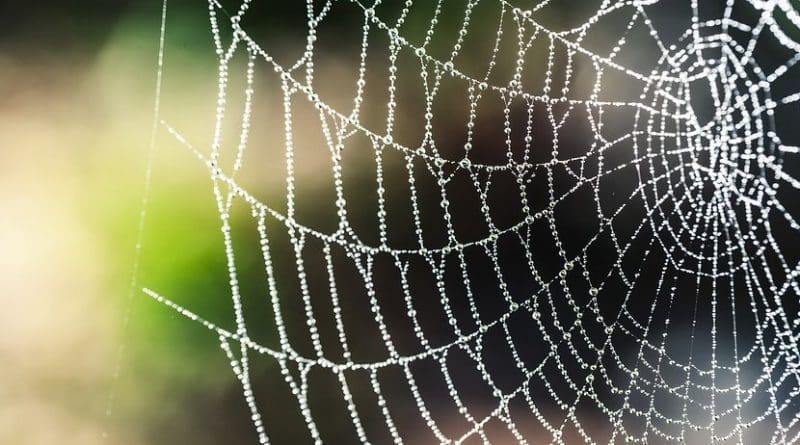

The piezoelectric coefficient ( d 33) was determined to be 3.62 pC/N. Then, mechanical vibrations were detected through piezoelectric characteristics analysis using a piezo force microscope and a dynamic mechanical analyzer with a voltage probe. Spider silk solution was synthesized from minor ampullate silk protein (MaSp) and then electrospun into nanofibers with a mean diameter of less than 100 nm. The process paves the way for the industrial production of artificial spider silk for biomaterial applications or for advanced textile manufacturing, Rising added.This work presents electrospun nanofibers from synthetic spider silk protein, and their application as both a mechanical vibration and humidity sensor.

“We have designed a process that recapitulates many of the complex molecular mechanisms of native silk spinning.” "This is the first successful example of biomimetic spider silk spinning,” she said. Using this method, the production of the artificial silk is scalable and better suited for industrial use, Rising said. The team constructed a biomimetic spinning apparatus to produce the silk, in which they can spin kilometer-long fibers only by lowering the pH. "To our surprise, this artificial protein is as water soluble as the natural spider silk proteins, which means that it is possible to keep the proteins soluble at extreme concentrations,” she said. The team used this discovery to design an artificial spider silk protein that can be produced in large quantities in bacteria, Rising said. What researcher Anna Rising, a senior researcher at Karolinska Institutet, and her colleagues Jan Johansson and Marlene Andersson discovered is that there is a substantial pH gradient in spider-silk gland that affects specific parts of the proteins, ensuring that the fiber forms rapidly and in a defined place, they said. These proteins are a key ingredient of spider silk-stored as an aqueous solution in the silk glands before being spun into a fiber-but previously could only be recreated using strong solvents. Up until now, it hasn’t been possible to use this type of process to develop a synthetic form of the material because it’s historically been difficult to obtain water-soluble spider-silk proteins from bacteria and other production systems. However, a team from the Swedish University of Agricultural Sciences and Karolinska Institutet now has found success in fabricating kilometer-long threads of synthetic spider silk using a biomimetic spinning process that mimics the process spiders themselves use to create the fibers, researchers said. Researchers have tried for some time to recreate spider silk synthetically but have been hampered by processes that need harsh chemicals and only produced fibers of limited use. (Source: Swedish University of Agricultural Sciences/Nature Chemical Biology)

#Steps of synthetic spider web production series
The material-the fibers of which can be stronger than steel-could be used to produce clothes that would not only be lightweight but also extremely durable with extreme longevity.Ī series of photographs show the biomimetic spinning of artificial spider silk as demonstrated by a group of scientists at Swedish University of Agricultural Sciences and Karolinska Institutet. Spider silk long has been a coveted material for scientists to synthesize because it is at the same time lightweight and yet incredibly strong.

Researchers in Sweden have successfully developed artificial spider silk that for the first time resembles the real material and can be used viably to manufacture textiles, they said.


 0 kommentar(er)
0 kommentar(er)
